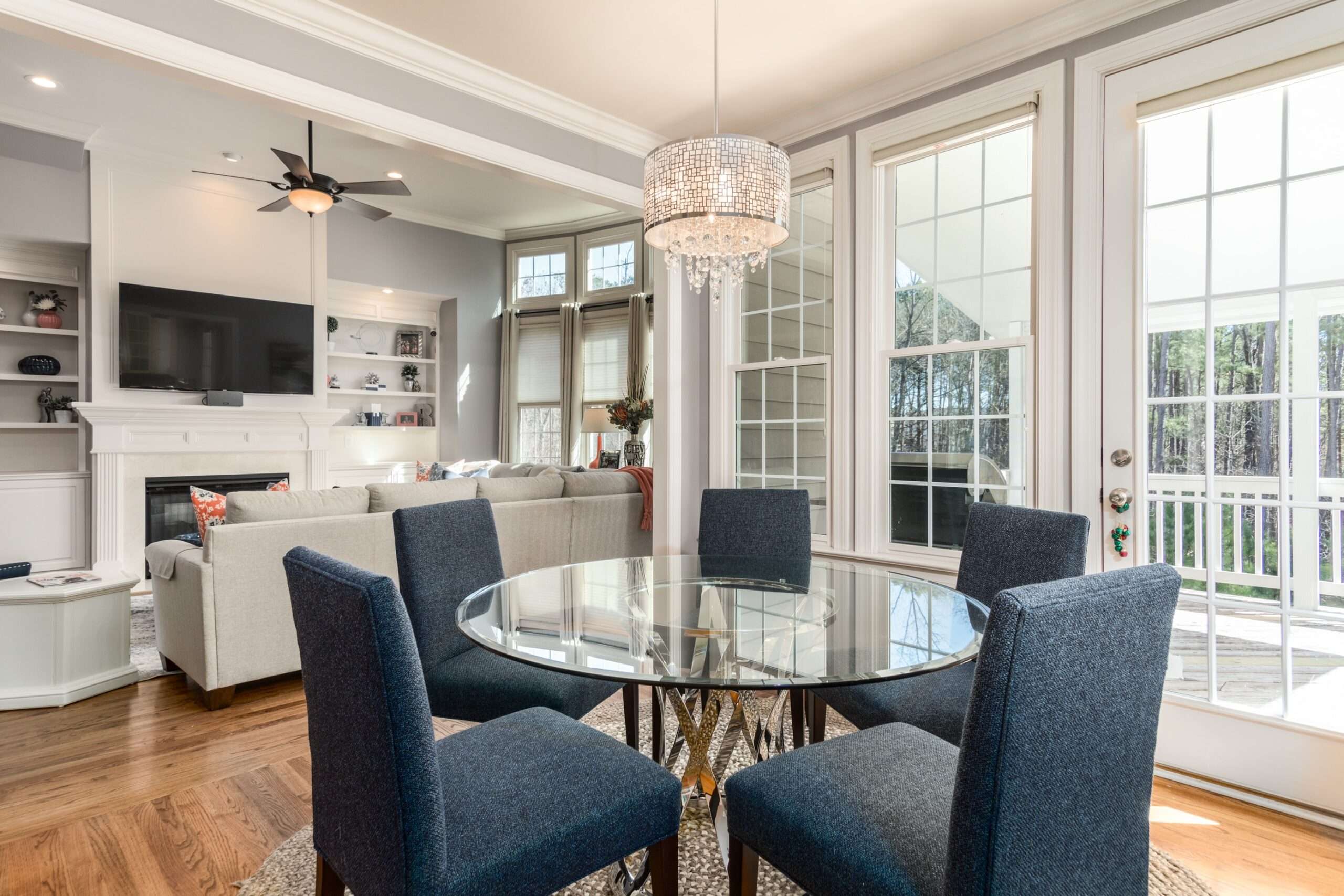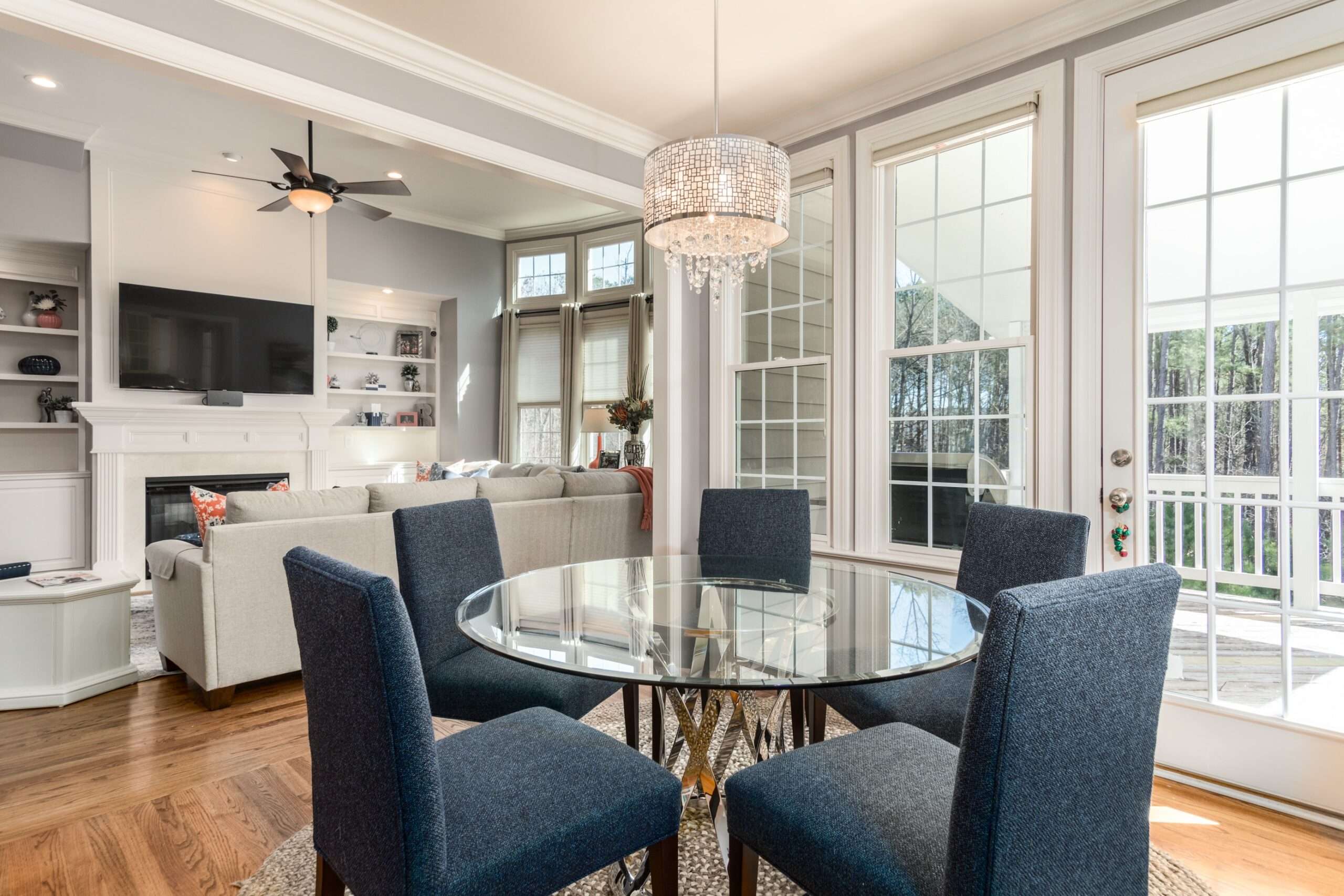Living in a converted shipping container has emerged as an intriguing alternative for those seeking a minimalist and sustainable lifestyle. The concept of off-grid living, combined with innovative design solutions, has resulted in repurposing shipping containers into comfortable, functional living spaces. This article explores the feasibility and practicality of residing in these unconventional dwellings, considering factors such as insulation, utilities, and overall livability. By examining the potential benefits and challenges of this unique housing option, we can gain insight into the modern pursuit of simplified and environmentally conscious living.
Can You Live In A Converted Shipping Container?
1. Introduction
Living in a converted shipping container has become a popular trend in recent years, especially among those looking for unique and cost-effective housing options. While the idea may sound unconventional, shipping containers offer several advantages that make them an attractive choice for individuals seeking sustainable and versatile living spaces. In this article, I will explore the advantages of living in converted shipping containers, factors to consider before making the decision, design and layout ideas, the challenges associated with container living, and the potential for off-grid living. Additionally, I will provide examples of successful shipping container living spaces for inspiration.
2. Advantages of Living in Converted Shipping Containers
2.1 Cost-effective Housing Option
One of the most compelling advantages of living in converted shipping containers is its cost-effectiveness. Compared to traditional housing options, purchasing a shipping container and converting it into a living space can be significantly more affordable. The initial investment for a shipping container is relatively low, and the cost to modify and convert it into a living space is also relatively inexpensive. This makes it an attractive option for individuals with limited financial resources, as well as those seeking to minimize their housing expenses.
2.2 Eco-friendly
Living in a converted shipping container is an environmentally friendly choice. By repurposing existing shipping containers, we can reduce the demand for new construction materials, thereby decreasing the strain on natural resources. Additionally, embracing container living promotes recycling and reduces waste, as these containers would otherwise sit unused in shipping yards. Furthermore, shipping containers can be easily fitted with eco-friendly features such as solar panels and rainwater collection systems, making them an excellent choice for those who strive to live a sustainable lifestyle.
2.3 Versatility and Mobility
Another advantage of living in a converted shipping container is its versatility and mobility. Shipping containers come in various sizes and can be easily customized to meet individual needs and preferences. They can be stacked, expanded, or joined together to create larger living spaces, allowing for flexibility in design. Additionally, shipping containers can be transported and relocated to different locations, making them suitable for individuals who desire a nomadic lifestyle or those who need temporary housing solutions.
2.4 Durability and Security
Shipping containers are designed to withstand harsh weather conditions and rough handling during transportation. As a result, they are highly durable and offer excellent structural integrity. This durability makes them resistant to pests, mold, and other forms of damage that can plague traditional housing. Moreover, shipping containers can be fortified with added security features, such as reinforced doors and windows, providing occupants with a sense of safety and peace of mind.
2.5 Off-grid Living Potential
Living off-grid, free from dependence on public utilities, has become an appealing lifestyle choice for many individuals. Converted shipping containers lend themselves well to off-grid living due to their compact size and the potential to incorporate renewable energy sources. With the installation of solar panels, rainwater collection systems, and composting toilets, container dwellers can achieve a self-sufficient and sustainable lifestyle. This off-grid potential makes shipping containers an ideal option for those seeking to reduce their ecological footprint and live autonomously.

3. Factors to Consider Before Living in a Converted Shipping Container
While living in a converted shipping container offers numerous advantages, there are several factors that individuals should consider before embarking on this alternative housing choice.
3.1 Local Building Codes and Regulations
Before converting a shipping container into a living space, it is crucial to research and understand local building codes and regulations. Building regulations can vary significantly from one jurisdiction to another and may dictate the feasibility and permissibility of container living. It is essential to obtain the necessary permits and ensure compliance with zoning regulations to avoid legal complications and penalties in the future.
3.2 Space and Layout Constraints
Shipping containers have inherently limited interior dimensions, typically measuring around 8 feet in width, 8.5 feet in height, and varying lengths. Therefore, individuals considering container living must carefully plan and optimize their use of space. Layout constraints can pose challenges in terms of creating functional living areas, adequate storage space, and ensuring sufficient hygiene facilities. While creative design solutions can help maximize space utilization, it is essential to realistically assess one’s spatial needs before committing to container living.
3.3 Insulation and Climate Control
Shipping containers are primarily designed to transport goods and are not naturally suited for human habitation. As a result, individuals must address insulation and climate control challenges when converting a container into a living space. These metal structures can become extremely hot in warm climates and unbearably cold in colder regions. Proper insulation and ventilation systems must be installed to regulate temperature and maintain a comfortable living environment. Failure to address insulation and climate control can lead to energy inefficiency and compromised livability.
3.4 Utilities and Services
Another factor to consider before living in a converted shipping container is access to utilities and services. While shipping containers can be outfitted with basic amenities such as plumbing and electricity, it is essential to assess the availability and feasibility of connecting to existing utility infrastructures. Proximity to water sources, sewage systems, and electrical grids can significantly impact the practicality and ease of container living. Additionally, individuals must also consider the costs associated with connecting to these utilities or explore off-grid alternatives.
3.5 Permits and Zoning Regulations
In addition to local building codes, permits, and regulations, individuals must also consider zoning regulations specific to their desired location. Zoning regulations can dictate where container dwellings are permissible, the size limitations, and design requirements. Considering these factors before embarking on container living is essential to avoid potential conflicts with local authorities and neighbors. Thorough research and due diligence regarding permits and zoning can help individuals make informed decisions and avoid legal and logistical challenges.
4. Design and Layout Ideas for Converted Shipping Containers
The design and layout of a converted shipping container play a crucial role in optimizing space utilization and creating a functional and aesthetically pleasing living environment. Consider the following design ideas when embarking on container living.
4.1 Single Container Homes
Single container homes are an ideal choice for individuals looking for compact and minimalist living spaces. These homes typically consist of a single shipping container, converted into a self-contained living unit. Careful planning is essential to maximize space utilization, ensuring the inclusion of essential facilities and amenities while maintaining a sense of openness. Innovative design solutions may include loft beds, foldable furniture, and multifunctional storage compartments.
4.2 Multi-container Structures
For those requiring larger living spaces, multi-container structures offer the opportunity for expansion and customization. By joining multiple containers together, it is possible to create spacious and comfortable living areas. These structures can feature separate rooms for bedrooms, bathrooms, and common areas, providing a sense of privacy and division within the limited space. The design possibilities are endless, making multi-container structures an excellent option for individuals with diverse spatial needs.
4.3 Stacking and Cantilevering
Stacking and cantilevering containers are innovative design techniques that maximize space utilization and create visually striking living spaces. By stacking containers vertically or horizontally, several levels or extended areas can be created. This design approach allows for the creation of balconies, rooftop gardens, or even multi-story living spaces. Stacking and cantilevering also offer unique architectural possibilities, transforming the appearance of the container structure and giving it a contemporary and distinctive look.
4.4 Incorporating Windows and Doors
Natural light is essential for creating a pleasant and inviting living environment. Incorporating windows and doors into the container design is crucial to ensure adequate daylighting and ventilation. Large window openings and glass doors not only enhance the visual appeal of the living space but also provide access to views and help establish a connection with the surrounding environment. Proper placement of windows and doors can also contribute to passive solar heating and cooling, reducing reliance on artificial lighting and air conditioning.
4.5 Roofing and Insulation Options
Insulating the roof of a converted shipping container is essential for maintaining a comfortable living environment. The metal roof of a container can radiate heat, making the interior excessively hot. Applying reflective coatings or insulating materials to the roof can help regulate temperatures and minimize energy consumption. Additionally, a well-insulated roof can also contribute to soundproofing, making container living more comfortable and conducive to daily activities.

5. Challenges of Living in a Converted Shipping Container
While there are numerous advantages to living in a converted shipping container, it is essential to be aware of the inherent challenges associated with this unique living choice.
5.1 Limited Space and Storage
Living in a shipping container inherently means living within confined spaces. The interior dimensions of a container can restrict individuals from enjoying the same freedom of movement and storage capacity as larger homes. Creative storage solutions, such as built-in furniture and multifunctional compartments, become crucial in maximizing space utilization. Downsizing possessions and adopting a minimalist lifestyle are often necessary when opting for container living.
5.2 Noise and Temperature Control
Shipping containers are primarily made of metal, making them prone to amplifying external noises and temperature extremes. Without proper insulation and soundproofing measures, container dwellers may experience discomfort due to noise pollution and challenges in temperature regulation. Additionally, extreme weather conditions can make the interior of the container unbearably hot or cold. Addressing these challenges through insulation, weatherstripping, and double-glazed windows is essential for a comfortable living environment.
5.3 Lack of Traditional Home Amenities
Living in a converted shipping container may require individuals to adjust their expectations regarding traditional home amenities. Small kitchens, limited bathroom space, and absence of separate rooms for various activities are common in container living. While creative design solutions can help optimize these spaces, individuals must be open to redefining their expectations of what constitutes a traditional home. Embracing a simpler lifestyle and focusing on essentials is necessary to adapt successfully to container living.
5.4 Maintenance and Upkeep
Containers are built to withstand the rigors of transportation and outdoor storage. However, when converted into living spaces, regular maintenance and upkeep become necessary to ensure their longevity and functionality. Metal surfaces may require maintenance to prevent corrosion, and insulation must be periodically checked to ensure efficient energy use. Additionally, regular inspections and repairs are necessary to address any damage caused by wear and tear over time. Individuals considering container living must be prepared for ongoing maintenance responsibilities.
6. Off-grid Living in Converted Shipping Containers
For those seeking self-sufficiency and a minimal ecological footprint, converted shipping containers provide an excellent opportunity for off-grid living.
6.1 Solar Power and Renewable Energy Sources
One of the key aspects of off-grid living in a converted shipping container is the utilization of solar power and other renewable energy sources. By installing solar panels on the roof or nearby structures, container dwellers can generate electricity to power their homes. Supplementing solar power with wind turbines or hydroelectric generators can further enhance self-sufficiency. Adopting energy-efficient appliances and LED lighting can also reduce overall energy demand.
6.2 Water Collection and Filtration
Container dwellers looking to live off-grid must address their water needs. Rainwater collection and filtration systems are excellent solutions to achieve water independence. Collecting rainwater from the container roof and filtering it through a series of tanks and filters provides a sustainable source of clean water. Additionally, water-conserving fixtures and practices, such as low-flow toilets and greywater recycling, can further minimize water consumption.
6.3 Waste Management and Composting
Off-grid living in converted shipping containers promotes proactive waste management and composting practices. Installing a composting toilet system allows for the conversion of organic waste into nutrient-rich compost, reducing the reliance on traditional sewage systems. Composting food scraps and garden waste further contributes to self-sufficiency and minimizes ecological impact. Recycling and reusing materials also play a pivotal role in maintaining a sustainable and waste-free lifestyle.
6.4 Sustainable and Self-sufficient Lifestyle
Living off-grid in a converted shipping container enables individuals to embrace a sustainable and self-sufficient lifestyle. By minimizing reliance on conventional utilities and embracing renewable resources, container dwellers can reduce their ecological footprint and live in harmony with nature. This lifestyle choice offers a sense of autonomy, promotes resource conservation, and encourages a closer connection with the natural environment.

7. Examples of Successful Shipping Container Living Spaces
To provide inspiration and showcase the possibilities of container living, here are some examples of successful shipping container living spaces:
7.1 Homes Designed by Professionals
Architects and designers have embraced the challenge of container living and created stunning homes that demonstrate the full potential of these unconventional structures. Notable examples include the “Container House” designed by Adam Kalkin and the “Crossbox House” by CG Architects. These professionally designed homes showcase innovative design solutions, utilize sustainability principles, and offer a luxurious and comfortable living experience within the constraints of shipping containers.
7.2 DIY Container Homes
Many individuals have taken on the challenge of converting shipping containers into living spaces on their own. DIY container homes offer a more affordable and personalized approach to container living. These homes, often shared on social media platforms and websites, demonstrate the creativity and resourcefulness of individuals who have converted shipping containers into beautiful and functional dwellings. These examples provide practical inspiration for others considering embarking on their own container living journey.
7.3 Unique and Innovative Designs
Beyond traditional container homes, unique and innovative designs have emerged in recent years, pushing the boundaries of what is possible with shipping containers. These designs incorporate unconventional shapes, striking color schemes, and unusual materials to create truly one-of-a-kind living spaces. Examples include the “Flying Box” in France and the “Container City” in London. These innovative designs serve as a testament to the versatility and endless design possibilities of container living.
8. Conclusion
Living in a converted shipping container offers a unique and sustainable housing option for individuals seeking an alternative lifestyle. The advantages of container living, including cost-effectiveness, eco-friendliness, versatility, durability, and off-grid potential, make it an attractive choice for those looking to embrace a simpler and more self-sufficient way of life. However, it is important to consider factors such as local building codes, space limitations, insulation, utilities, and maintenance before committing to container living. By carefully addressing these considerations and exploring innovative design ideas, individuals can create comfortable, functional, and aesthetically pleasing living spaces within the confines of a shipping container. With the right planning and execution, living in a converted shipping container can be a rewarding and fulfilling experience.




